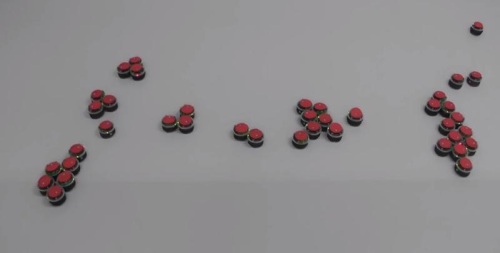Research is being conducted at the Sheffield Center for Robotics to develop fundamental artificial intelligence that could someday have military, medical, and industrial applications. Dr. Roderich Gross, head of the natural robotics lab, says his team has been working to program 40 robots to accomplish tasks as a collective swarm.

Gross believes that the robot hive can perform more advanced tasks and venture into situations unsuitable for humans. The team of scientist has already demonstrated the swarm’s ability to gather around an object and move it.
What can they do?
Pushing is carried out by swarm's need to uncover a target object and the assumption that it lurks behind any object in their path. This creates a carrot-on-a-stick loop that forces the swarm to repeatedly push the object in a vain attempt to find its target. This mechanic is very simple and thus raises the question, as Dr. Gross' puts it, “is less more?” In military circumstances, the technique has vast potential for saving human lives by using machines to perform reconnaissance missions, remove deadly explosives, or even perform hostage-rescue operations.
Aggregation
In the first series of experiments, Gross' team outfitted the robots with very basic components, essentially disabling their ability to compute arithmetic, in order to establish the minimum information needed by the robots to aggregate.
With that said, the programming used by his team is very simple: a robot will use its proximity sensors to check if another unit is near; if so, it turns on the spot; if not, it moves in a wider circle until it finds another unit. The importance of the experiment lies in that the robots may not need any memory or processing units, and could thus be simplified. The simpler the technology, the more realistic it is to recreate on a nanoscale for medical applications, using microscopic machines to treat ailments inside the body.
Segregation
Additionally, Dr. Gross' team simulated segregation among the swarm by programming the robots to behave like loosely fitting particles to behave much like those inside a shaken bag of cereal — the larger particles move to the top and the smaller ones move toward the bottom. The robots are assigned three different colors and move randomly to embody vibrating particles; they are also attracted to a light source used to represent gravity.
The ability to move heavy resources has been paramount in the construction of everything from the pyramids to modern-day skyscrapers, and robot swarms may have a hand in automating this process given the research is very general and thus flexible.
Advertisement
Learn more about Electronic Products Magazine





